- Bridal
- Jewellery
- Watches
- Designers
- Grad Rings
- Services
- Shop
- Sale
- Contact Us
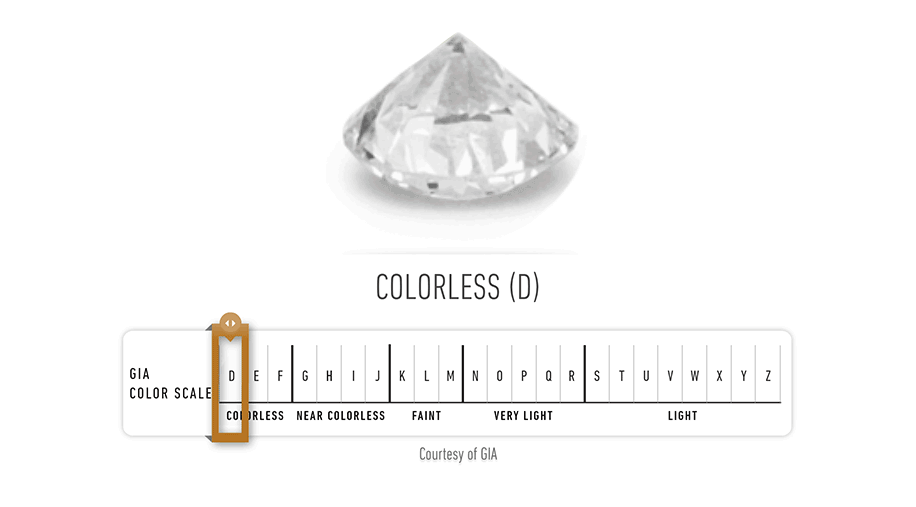
Diamond color actually means a lack of colour. A chemically pure and structurally perfect diamond has no hue, like a drop of pure water, and consequently, a higher value. GIA's D-to-Z diamond colour-grading system measures the degree of colourlessness by comparing a stone under controlled lighting and precise viewing conditions to masterstones or stones of established colour value.
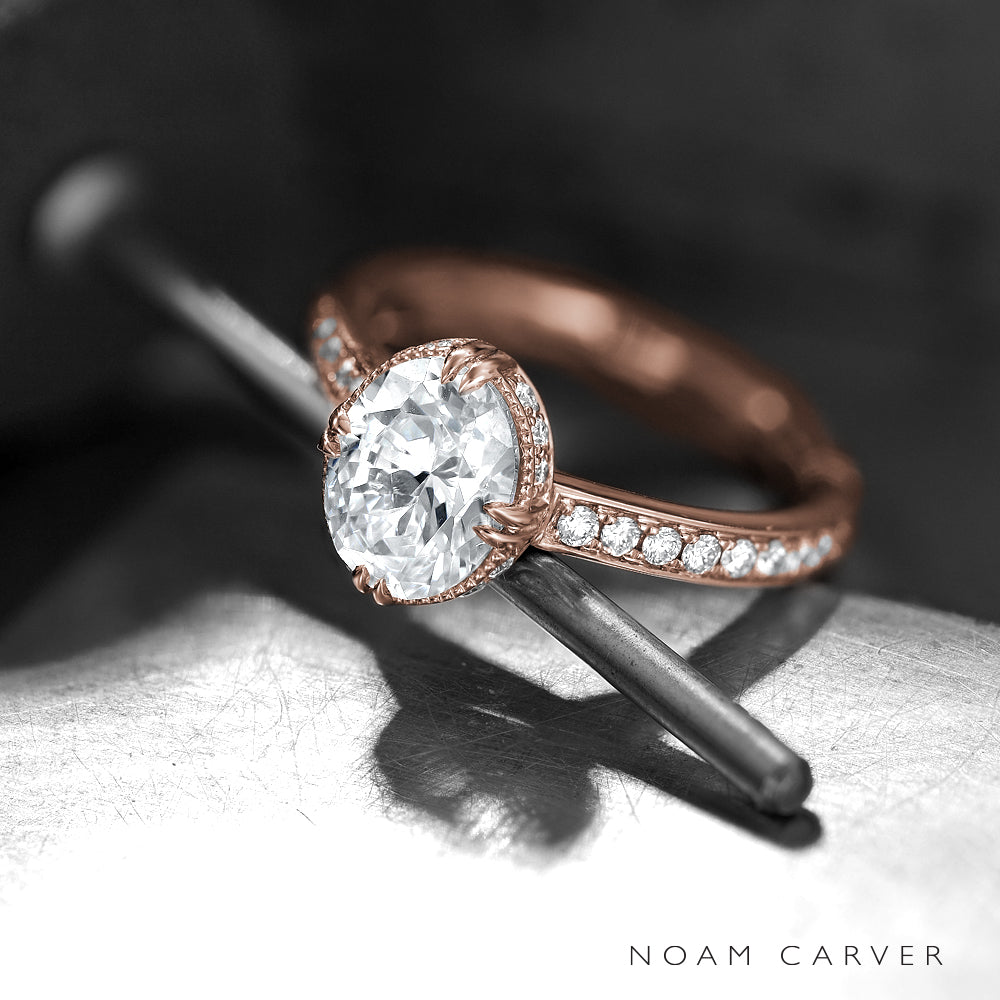
GIA's diamond D-to-Z color-grading scale is the industry's most widely accepted grading system. The scale begins with the letter D, representing colourless, and continues, with increasing presence of colour, to the letter Z. Many of these colour distinctions are so subtle that they are invisible to the untrained eye; however, these distinctions make a very big difference in diamond quality and price.
Fun fact: Colour is the only factor that is not determined by examining the table or a top down perspective. Diamonds are actually graded for colour by placing them upside down (with the table resting on the surface) on a pure white piece of paper.
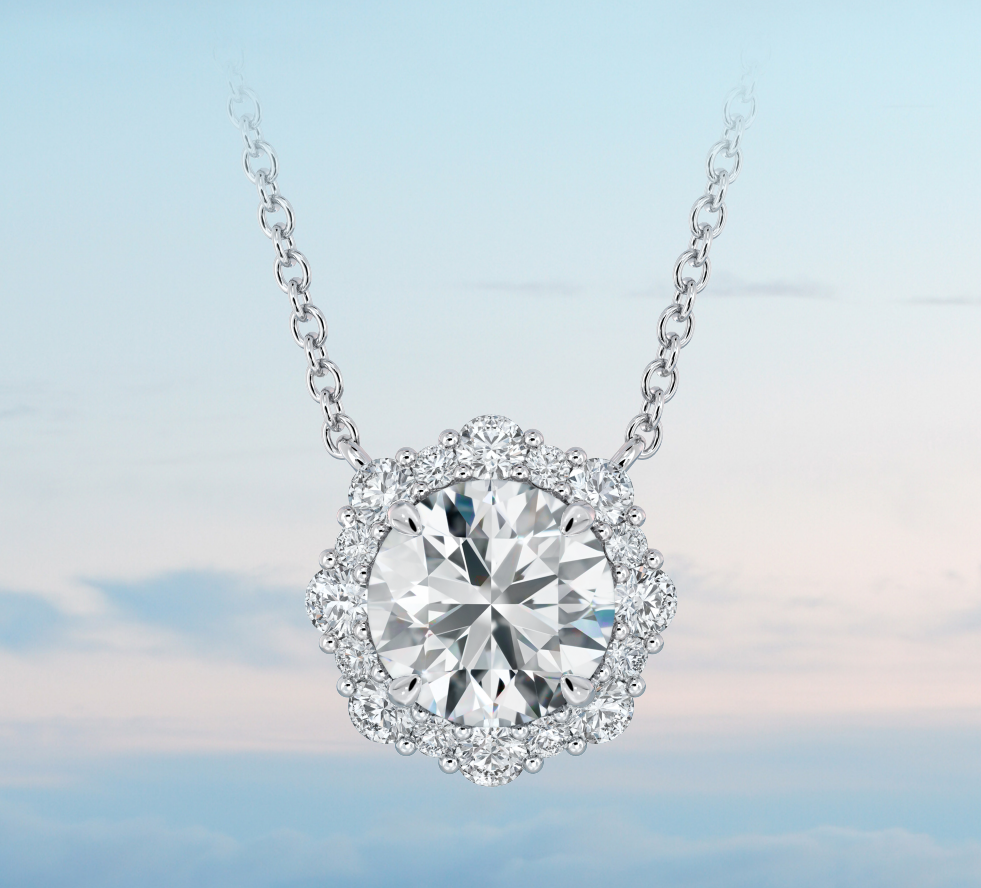
Diamond Clarity refers to the absence of inclusions and blemishes. Natural diamonds are the result of carbon exposed to tremendous heat and pressure deep in the earth. This process can result in a variety of internal characteristics called 'inclusions' and external characteristics called 'blemishes.' The GIA Diamond Clarity Scale has 6 categories, some of which are divided, for a total of 11 specific grades.
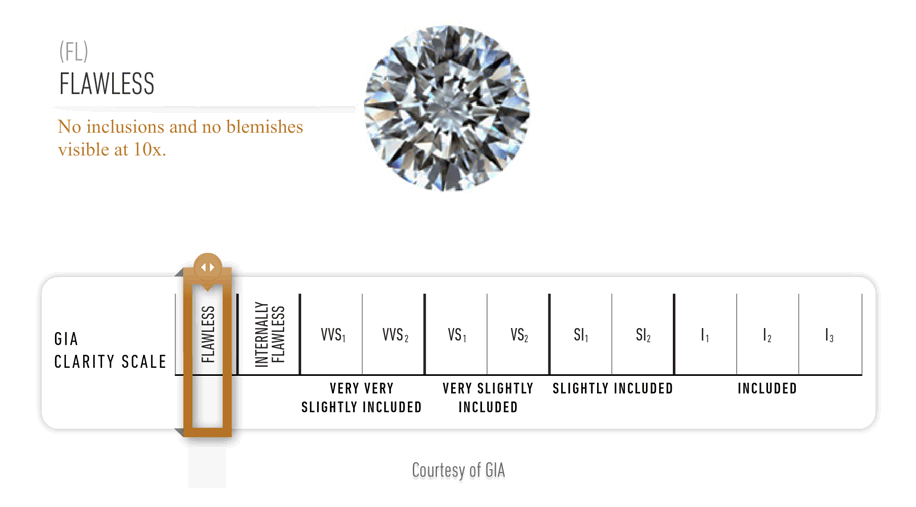
Flawless (FL) / No inclusions and no blemishes visible under 10x magnification
Internally Flawless (IF) / No inclusions visible under 10x magnification
Very, Very Slightly Included (VVS1 and VVS2) / Inclusions so slight they are difficult for a skilled grader to see under 10x magnification
Very Slightly Included (VS1 and VS) / Inclusions are observed with effort under 10x magnification but can be characterized as minor
Slightly Included (SI1 and SI2) / Inclusions are noticeable under 10x magnification
Included (I1, I2, and I3) / Inclusions are obvious under 10x magnification which may affect transparency and brilliance
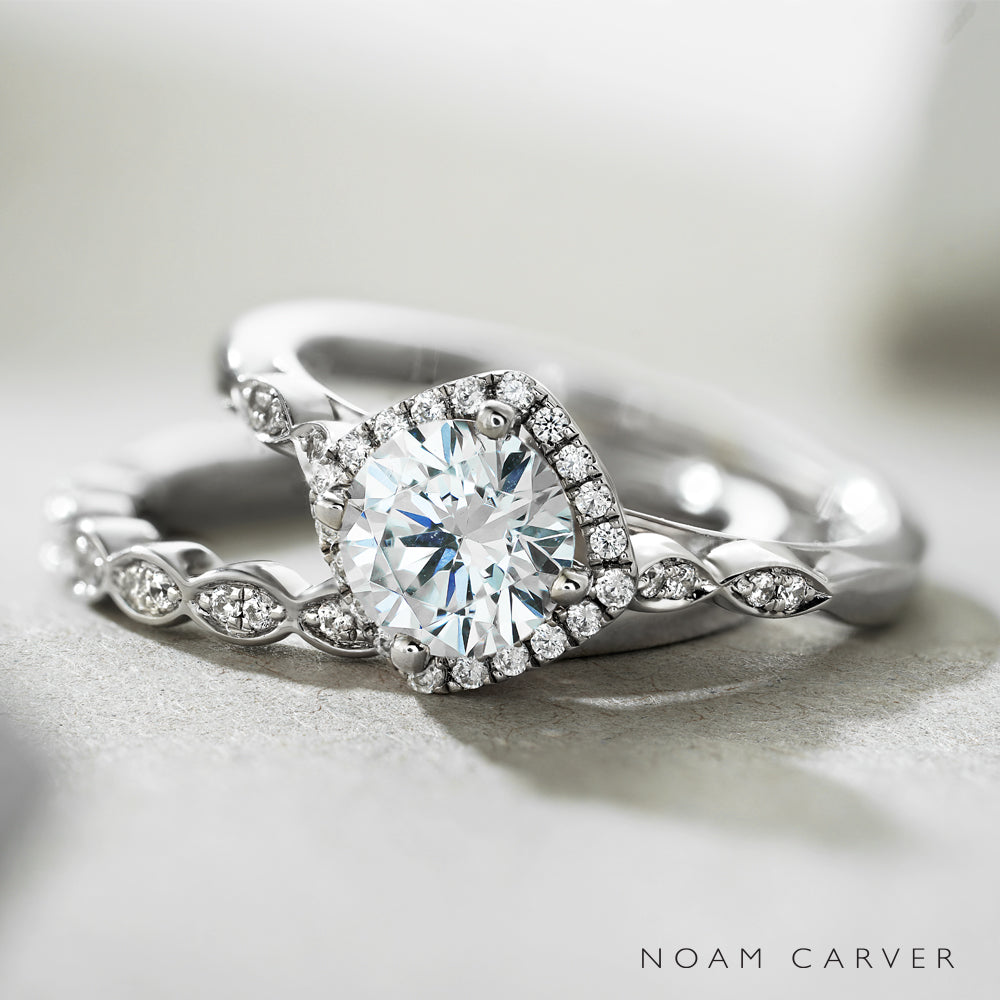
A Diamond's Cut Unleashes Its Light. Diamonds are renowned for their ability to transmit light and sparkle so intensely. We often think of a diamond's cut as shape (round, emerald, pear), but a diamond's cut grade is really about how well a diamond's facets interact with light.
Precise artistry and workmanship are required to fashion a stone so its proportions, symmetry, and polish deliver the magnificent return of light only possible in a diamond.
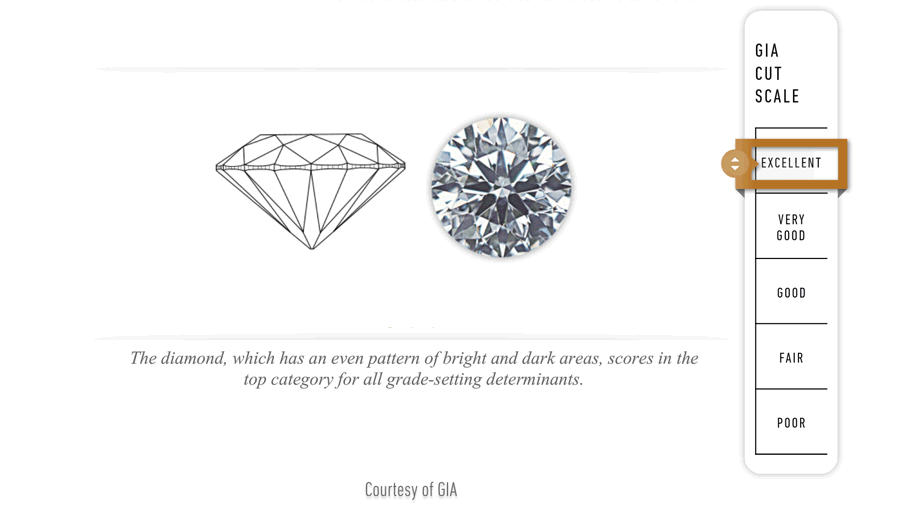
A diamond's cut is crucial to the stone's final beauty and value. And of all the diamond 4Cs, it is the most complex and technically difficult to analyze.
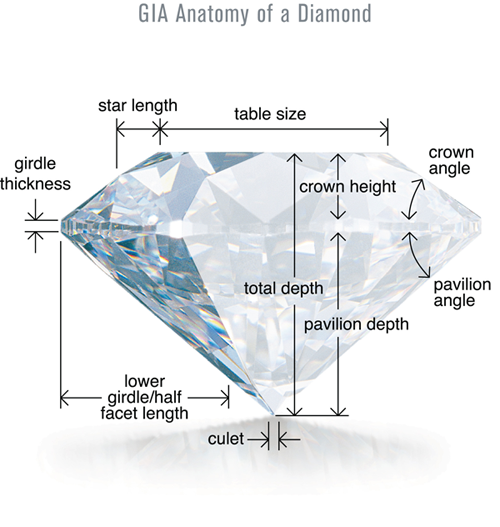
Brightness: Internal and external white light reflected from a diamond
Fire: The scattering of white light into all the colours of the rainbow
Scintillation: The amount of sparkle a diamond produces, and the pattern of light and dark areas caused by reflections within the diamond
GIA's diamond cut grade also takes into account the design and craftsmanship of the diamond, including its weight relative to its diameter, its girdle thickness (which affects its durability), the symmetry of its facet arrangement, and the quality of polish on those facets.
The GIA Diamond Cut Scale for standard round brilliant diamonds in the D-to-Z diamond colour range contains 5 grades ranging from Excellent to Poor.
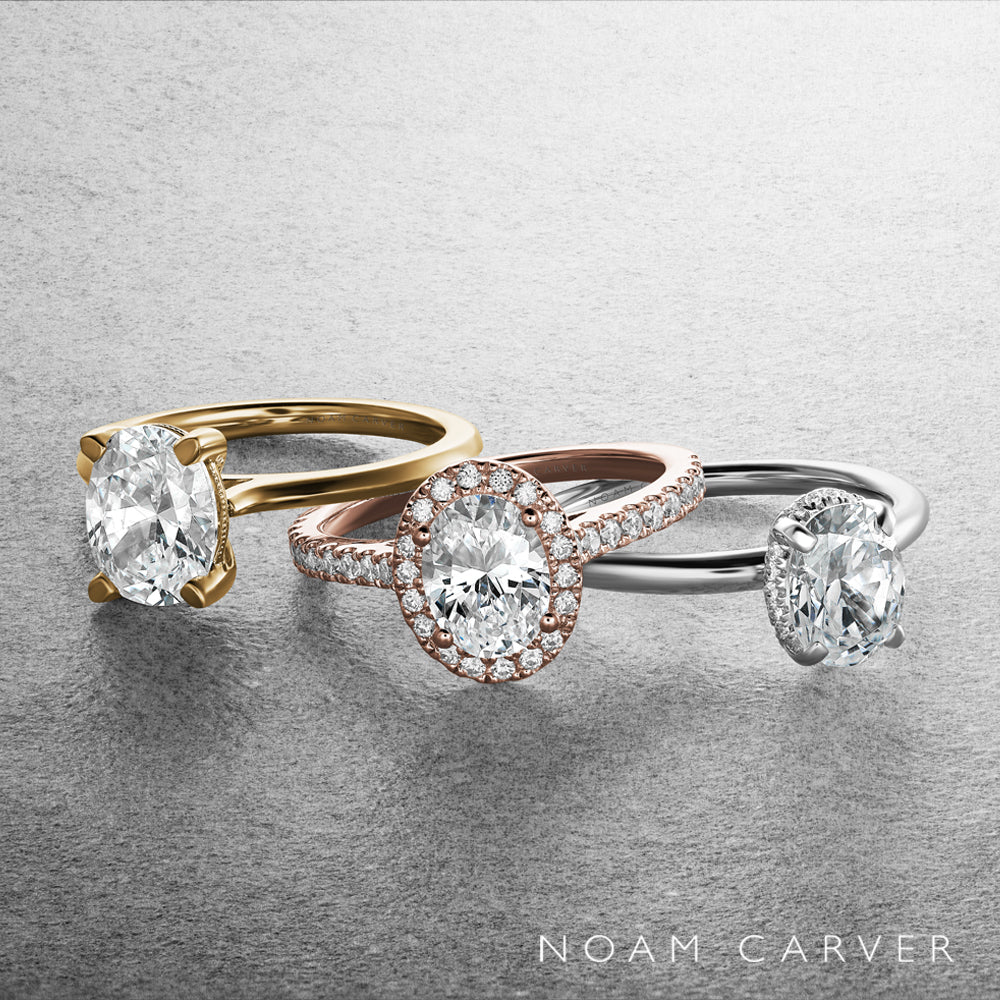
Diamond carat weight is the measurement of how much a diamond weighs. A metric "carat" is defined as 200 milligrams.
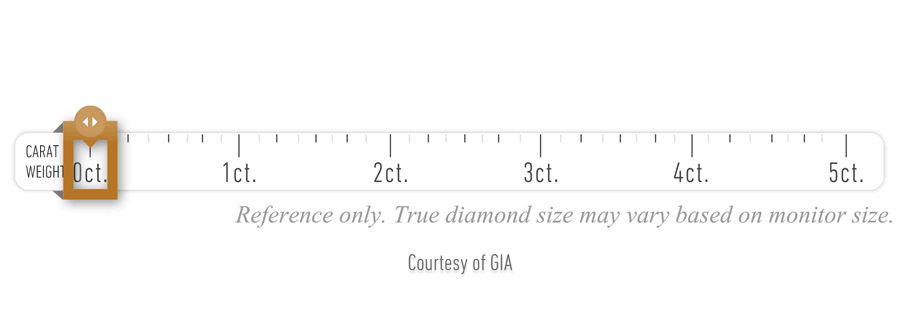
Each carat can be subdivided into 100 'points.' This allows very precise measurements to the hundredth decimal place. A jeweler may describe the weight of a diamond below one carat by its 'points' alone. For instance, the jeweler may refer to a diamond that weighs 0.25 carats as a 'twenty-five pointer.' Diamond weights greater than one carat are expressed in carats and decimals. A 1.08 carat stone would be described as 'one point oh eight carats.'